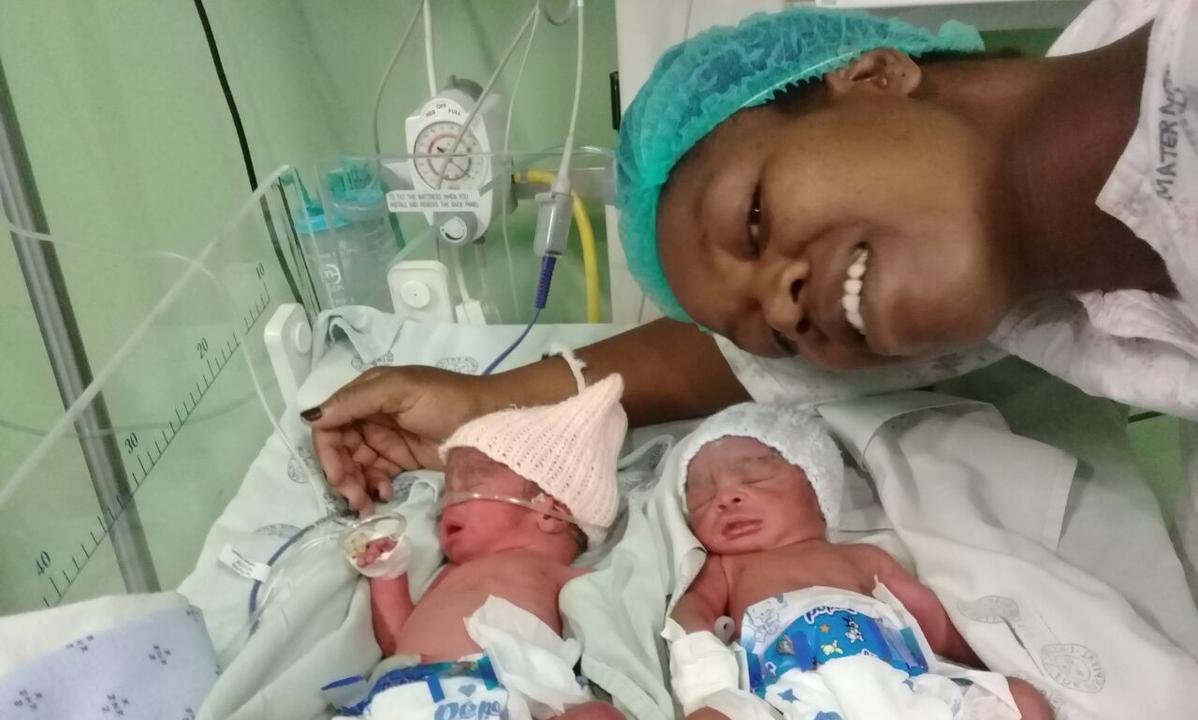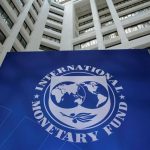
Thabisile Hlatshwayo and her twin babies born on New Year’s Day at Itshelejuba Hospital in Kwazulu-Natal. The births follows the death of another set of twins Hltashway prematurely delivered last year. Photo: Mondli Mwandla/KZN Department of Health
Cape Town, South Africa – A woman from Pongolo in KwaZulu-Natal said that her tears had been wiped away after giving birth to healthy twins on News Year’s Day after she lost her first set of twins almost a year ago.
According to a statement by the KwaZulu-Natal health department, Thabisile Hlatshwayo was distraught when her first pregnancy ended in her twins being born prematurely. But Hlatshwayo soon fell pregnant again, not knowing she was carrying another set of twins.
Her first baby, Sibanesihle, was born at 3.30am, following by her brother, Senzelwe, at 3.45am at the Itshelejuba hospital in Pongola, both weighing 1.5 kilograms.
“I’m very happy, from the bottom of my heart. I have also informed them at home about the arrival of my babies and they are elated,” she told health department officials.
“When I lost my other babies, who were my first, it was a very difficult time. Now at home they are saying that these babies are here to wipe away the family’s tears.”
The twins were among of group of 66 babies born on January 1, 2017 in KwaZulu-Natal – 35 boys and 31 girls. KwaZulu-Natal health MEC Sibongiseni Dhlomo and some of his officials visited the Murchison Hospital in Port Shepstone on Sunday, handing out gifts to two mothers who gave birth on New Year’s Day.
However, he expressed concern that among the expectant mothers in the hospital’s gynaecology ward was a 14-year-old girl.
“A ward such as this one is normally not for teenagers, certainly not a 14-year-old. Therefore, once again, I wish to register our deep concern about teenage pregnancy in the province. It is very unsafe when young people fall pregnant at such a young age,” said Dhlomo.
“If you’re a young person under the age of 18, chances of delivering safely are slim. It actually places the mother’s own life and the baby’s in danger. Such things push us back as country from improving in one of our key indicators, which is to minimise the rate of maternal and child mortality.”









